From garden birds to Norwegian vikings, we find out what inspires our favourite crafty duo. Highly successful designers, artists and authors Arne Nerjordet and Carlos Zachrison sat down with us to talk all things woolly. Known for their inspiring craft books and colourful makes, they allow their Scandinavian livelihood to inspire them in so many ways. Since their first book in 2010, they’ve created great titles, but we wanted to chat to them about their latest release, Field Guide to Knitted Birds. Read on to find out what encourages them and even bag yourself a free book!
What inspired you to create a whole book of knitted birds?
A: I think we’re known for doing all the stuff people don’t know they need until they see it, so I think the bird is in that universe. Also, where we live we have a lot of birds around and we just figured ‘why not knit a bird?’
How many birds in total do you think you knitted for the book?
A: I don’t know, that’s a lot of birds!
C: Maybe 100?
A: Maybe, because for some of them we made many versions even though there’s only one in the book. Particularly the winter birds – once you’ve made one you can’t stop! And we also do workshops where we always make at least one bird each.
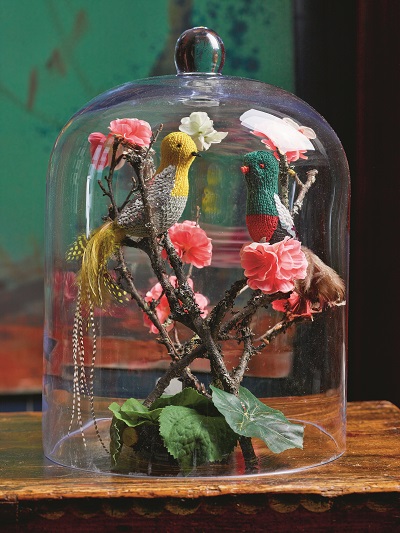
Do you each have a favourite design?
C: There are two little white birds with Peruvian hats. Those are my favourites because they’re really cute. They just look so… stupid! I think they’re very charming.
A: I like the paradise birds. They help me to clean up because I can use up all the sequins and feathers I have laying around.
Which garden bird do you like the most?
A: We have a new friend, the national bird of England, the robin.
C: We don’t have them in Norway but we saw one in our garden last summer so that was really strange.
A: We had to look in the bird book to see what it was! We also like the magpie. They’re beautiful, I love them.
C [to Arne]: You know that the magpie is a hoarder, right? That’s why he likes them.
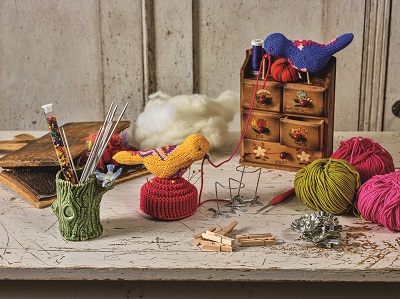
“England is very inspiring. We’ve joined the National Trust and we love visiting the gardens and all the old houses”
At what point did you decide to give the birds sweaters?
A: That’s because they always want us to be on the covers of the books.
C: And we don’t want to, so we always have a fight.
A: We have the two sweaters that we like, so they did a picture of us in the sweaters, and then we thought ‘let’s make the birds traditional sweaters so they can be on the cover instead’.
Are you self-taught, or did you study knitting?
A: I learned from my mother, grandmother and great-grandmother – also crocheting and weaving. But then I studied fashion design and pattern construction.
C: He’s also been a teacher at a school of design.

How did you go about creating your range of sock yarn colours for Regia?
C: When we do things like this we’re not really designing for ourselves, we’re designing things for people to use, so we can’t just make things that only we like.
A: We don’t need to love every colour combination. That was one of the biggest problems when I was teaching in the fashion school – some students never got it, they were making clothes for themselves, and just thinking about what they would like to wear.
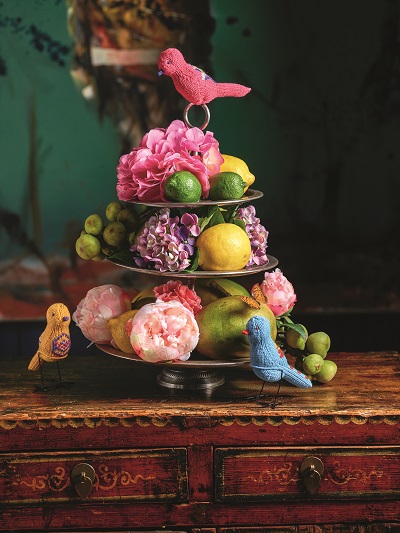
So is that the same for the birds and other items you’ve done? Are you always thinking about the audience?
C: No, because we do the book as more of an inspiration. We don’t really care if they knit the bird exactly as it’s supposed to be. Actually, we prefer it if they don’t, because it means we’ve inspired them. So when working on books we can be more creative and do whatever the heck we want.
What difficulties might a knitter face when attempting your bird designs, and how do you recommend overcoming them?
C: I think some people might be intimidated by double-pointed needles. It’s not really that hard – you just have to try it, because it’s trial and error. What we recommend is to go for the white bird. Don’t go for the sweaters or paradise birds because you need smaller needles for those. Once you’ve done one it’s always easier to do the next and take small steps.
A: When we do workshops in America and people get into using double-pointed needles they say ‘you’ve changed my life’.

Do you have any more book projects in the pipeline?
A: Yes, we have a new book coming out in Norway in September, but I can’t tell you what it’s about!
You have a very individual style. Where do you look when you need some creative inspiration?
A: Flea markets. I think they are the most inspiring places to go. Also antique stores and art galleries. We have a lot of friends who are kind of interesting! So they always inspire us. Also, England is very inspirational. We’ve joined the National Trust and we love visiting the gardens and all the old houses.
Describe a typical day for Arne and Carlos.
A: Well, they’re all different. We get up, we drink coffee, knit or crochet, walk the dog, and then we try to go skiing for an hour or two. Some days we don’t even know what day it is!
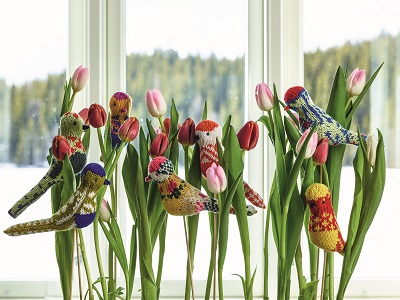
We always see bits of your house in your YouTube videos and it looks beautiful – can you describe it for us?
A: It’s an old railway station. We have four houses on the property but we use the main building the most. Plus we have a greenhouse which is very nice. As it’s not too small we can work in different rooms and then meet for dinner.
Why do you like visiting the UK?
A: What I like about England is there’s a lot of eccentric people here – more than anywhere. When we go to these National Trust properties and tell them we’re from Norway we always hear ‘my husband was in Norway in the war’ or ‘I’m part viking’! So we always feel welcome. And the countryside is so lovely with the small roads. Although we’re on the wrong side so it’s scary!
To get your hands on Field Guide to Knitted Birds by Arne and Carlos (£14.99, Search Press) and have a go at these stunning makes for yourself, visit searchpress.com

Feeling inspired? Try out Nicky Fijalkowska’s free Blue Tit pattern, click here




















 Crochet-along
Crochet-along
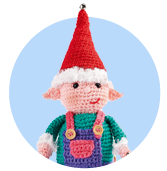 Christmas
Christmas
 Granny Squares
Granny Squares
 Toys
Toys
 Amigurumi
Amigurumi
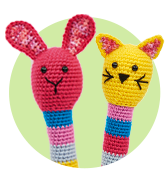 Baby
Baby
 Homewares
Homewares










Share